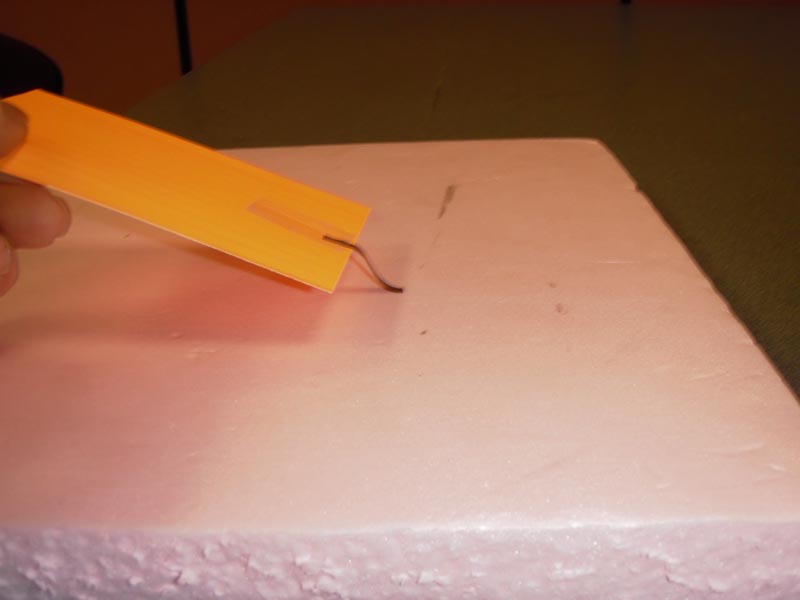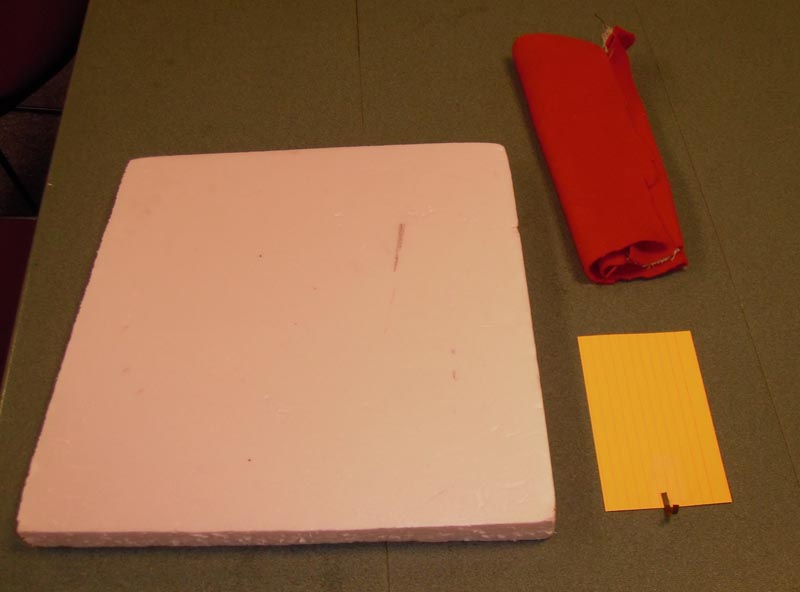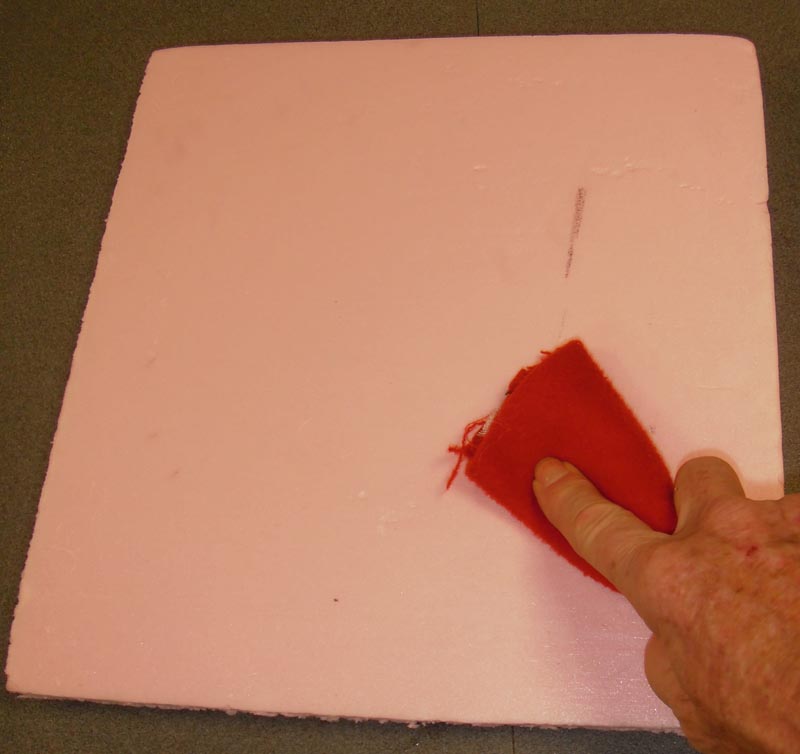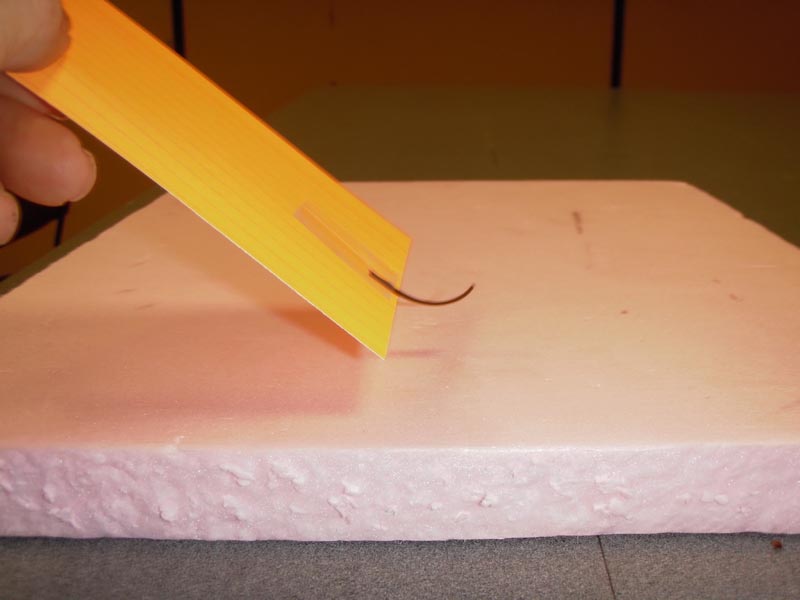Detect the Force
An Exploratorium Teacher Institute Draft Activity

Detect the Force
An Exploratorium Teacher Institute Draft Activity

Introduction
A thin plastic cantilever can be used to search for charge distributions on a styrofoam plate that has been rubbed with wool.
Material
Styrofoam sheet about 1 foot square (0.25 meter square): For example sheets of 1" (2.5 cm) thick Foamular pink home insulation by Dow-Corning available at Home Depot.
Wool cloth.
A piece of magnetic cassette tape 1 inch or 2.5 cm long
Sticky tape.
3by5 card

Assembly
Tape the piece of magnetic cassette tape to the 3by5 card so that the tape protrudes from the edge of the card and curves upward.
To Do and Notice
Stroke the styrofoam with a piece of wool firmly. Make a pattern. Try a diagonal line, or an x, or a square, or a circle.

Now scan the tape across the square of styrofoam as if you were plowing a field. This is called a raster scan.
Hold the tape at a constant height above the foam, perhaps 1/4 inch or 1/2 cm.

Notice where the tape is attracted to the foam. The tape is attracted and bent downward where the foam is charged. See the top image.
What pattern did you find on the foam?
What's Going On?
The charged places on the styrofoam attract the neutral cassette tape. (The charges induce a polarization on the cassette tape and then attract the electrically polarized tape.)
The attraction bends the cantilever.
By scanning the sensor cantilever across the styrofoam you can detect the invisible pattern of electrical charge.
So What?
Atoms are also invisible. Scanning probe microscopes can be used to detect atoms by using a raster scan of a cantilever.
Etc.
CRT television tubes use a raster scan to create an image.
|
Scientific Explorations with Paul Doherty |
|
25 October 2010 |